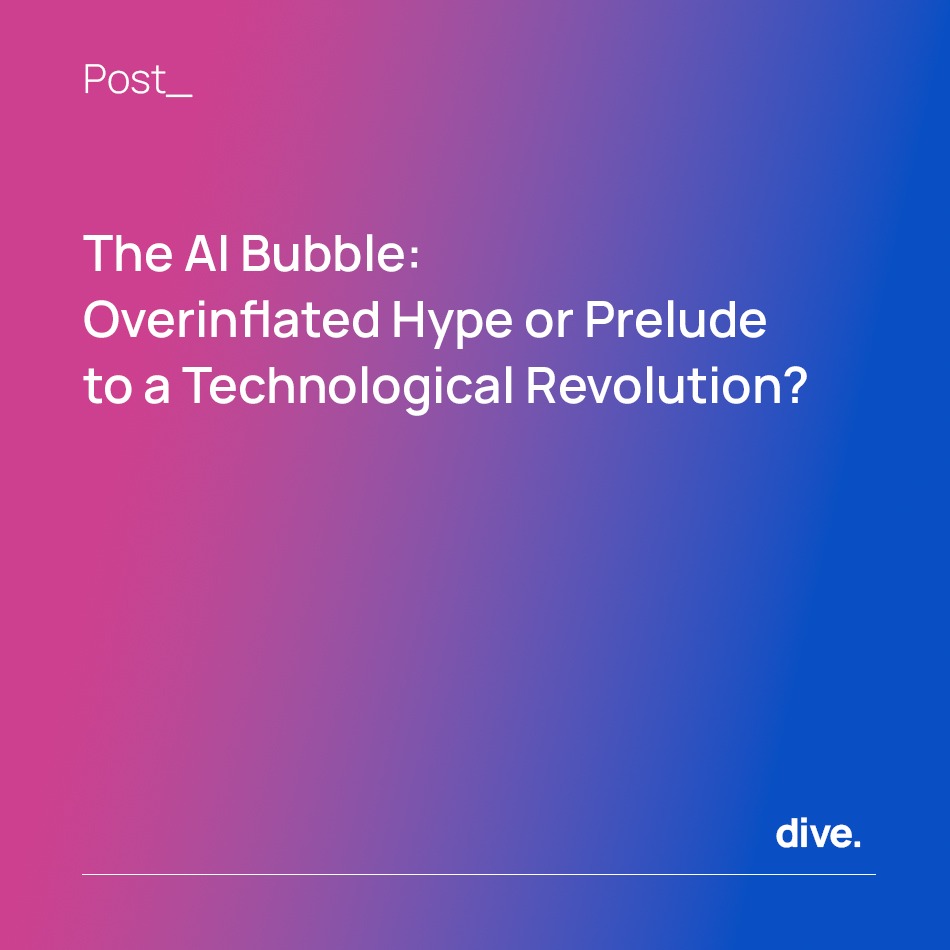In the fast-paced world of technology, few innovations have generated as much enthusiasm and speculation as Artificial Intelligence (AI). In mid-2024, we find ourselves at the epicenter of what many consider a new tech bubble, this time centered on generative AI. This phenomenon, recently analyzed by Richard Waters in the Financial Times, raises crucial questions about the future of technology and its impact on the business world.
Generative AI, capable of creating original content from vast datasets, has captured the imagination of investors, entrepreneurs, and technologists alike. However, as often happens in the tech sector, the line between revolutionary innovation and excessive speculation can be blurry. In this article, we will explore in depth the dynamics driving the current AI boom, its challenges, and its potential to reshape the technological and business landscape.
· The Formation of the AI Bubble
The term “bubble” in the technological context evokes memories of past episodes, such as the “dot-com” bubble of the late 90s. However, each cycle of innovation has its own unique characteristics. In the case of AI, we are witnessing a convergence of factors that are fueling an unprecedented expansion:
a) Technological advances: Recent progress in deep learning and natural language processing has significantly expanded AI capabilities, enabling applications previously considered science fiction.
b) Massive investment: Large tech companies and venture capital are channeling astronomical sums into AI development, creating a snowball effect in the sector.
c) High expectations: The promise of technology that can automate complex tasks and generate original content has skyrocketed expectations, sometimes beyond current real capabilities.
d) Corporate FOMO: Fear Of Missing Out is driving many companies to invest in AI, even without clear specific use cases.
e) Intensive media coverage: Constant media attention amplifies both successes and speculations, contributing to the sense of urgency in AI adoption.
It’s important to note that, as Waters points out, being inside a bubble can make it difficult to perceive. Each individual investment or spending decision may seem rational, but the cumulative effect can result in a disproportionate expansion of the market.
Moreover, history teaches us that tech bubbles often have a lot of room for growth before reaching their peak. Investors who withdraw prematurely may miss out on significant gains, further complicating decision-making in this volatile environment.
However, it is crucial to remember that not every bubble is purely speculative. Sometimes, these periods of excessive enthusiasm can be precursors to genuine and lasting technological transformations. The key question is to discern whether the current AI boom will fall into this category or if we are facing a temporary overvaluation of the technology’s potential.
· Challenges in Adopting Generative AI
Despite widespread enthusiasm, the practical implementation of generative AI faces significant obstacles:
a) Gap between investment and productive use: Although investment in AI is massive, there is a time lag between technology development and its effective application in real business environments.
b) Steep learning curve: Many companies are just beginning to experiment with AI pilot projects, which implies a prolonged learning and adaptation process.
c) Lack of compelling consumer use cases: Unlike previous innovations such as the iPhone or Google Search, generative AI has not yet produced services that radically transform the digital life of the average consumer.
d) Implementation complexity: Integrating AI systems into existing business infrastructures can be a complex and costly process.
e) Ethical and privacy concerns: The use of large datasets to train AI models raises questions about privacy and the ethical use of information.
· The Role of Big Tech
Large tech companies play a crucial role in the current AI boom:
a) Investment concentration: A large part of AI investment comes from a handful of tech giants, which could lead to a concentration of power in the sector.
b) Financial capacity: Companies like Apple, Microsoft, Alphabet, Amazon, and Meta have the resources to maintain and even increase their AI investments in the long term.
c) Strategic necessity: For these companies, investing in AI is not just an opportunity, but a necessity to maintain their competitive position in the market.
d) Domino effect: The investment decisions of these large companies significantly influence the rest of the tech ecosystem.
· Future Prospects for Generative AI
Despite the challenges, the potential of generative AI remains enormous:
a) New use cases: As the technology matures, innovative applications are likely to emerge in various sectors.
b) Cost reduction: New generations of chips, such as Nvidia’s Blackwell, promise to significantly reduce the costs of training and running AI models.
c) Democratization of technology: The fall in costs could make AI more accessible to companies of all sizes.
d) Rapid evolution: The pace of development in AI is dizzying, which could accelerate its adoption and transformation.
· Implications for the Tech Ecosystem
The rise of AI is reshaping the technological landscape:
a) Pressure on startups and medium-sized companies: The dominance of big tech in AI could make competition difficult for smaller companies.
b) Niche opportunities: However, opportunities also arise for startups that can offer specialized AI solutions.
c) Sectoral transformation: Traditional industries are forced to adapt and adopt AI solutions to remain competitive.
d) New skills in demand: The demand for professionals specialized in AI and data science is increasing.
Conclusion
The current AI boom presents both opportunities and risks. While we may be in a bubble, we could also be witnessing the birth of a new technological era. The key will be in how companies and society navigate this period of rapid evolution.
It is essential to maintain a balanced approach: being aware of the risks of overinvestment, but also being open to the transformative possibilities of AI. Time will tell whether this period will be remembered as a speculative bubble or as the prelude to a technological revolution that will fundamentally change the way we live and work.






